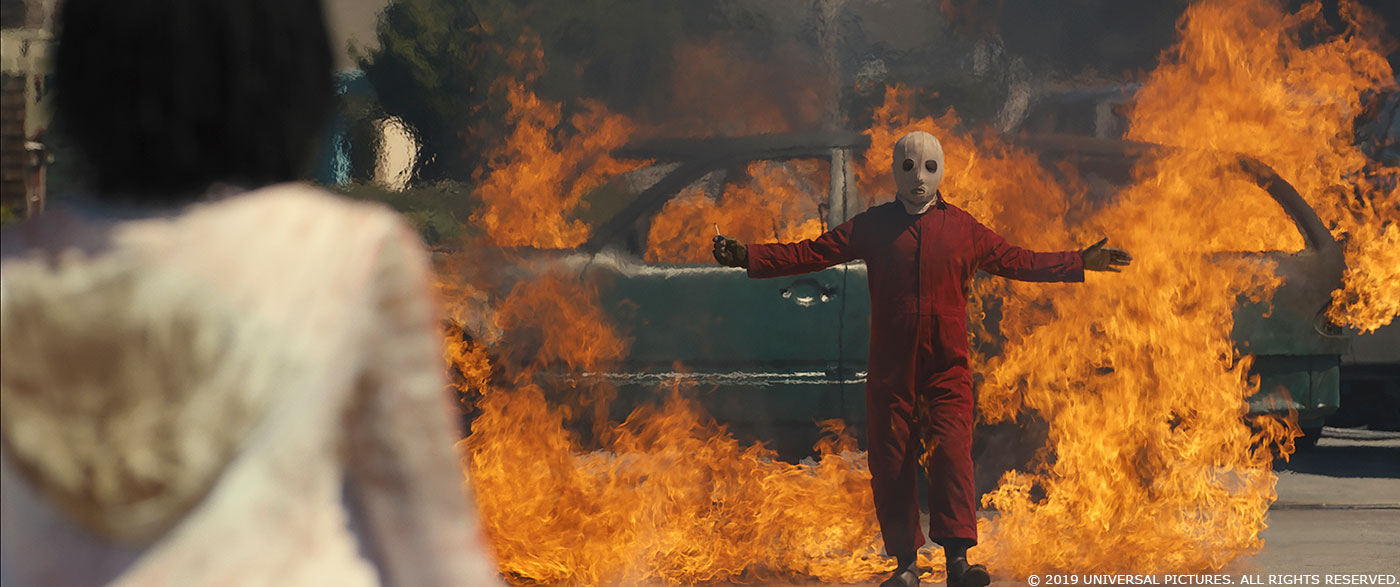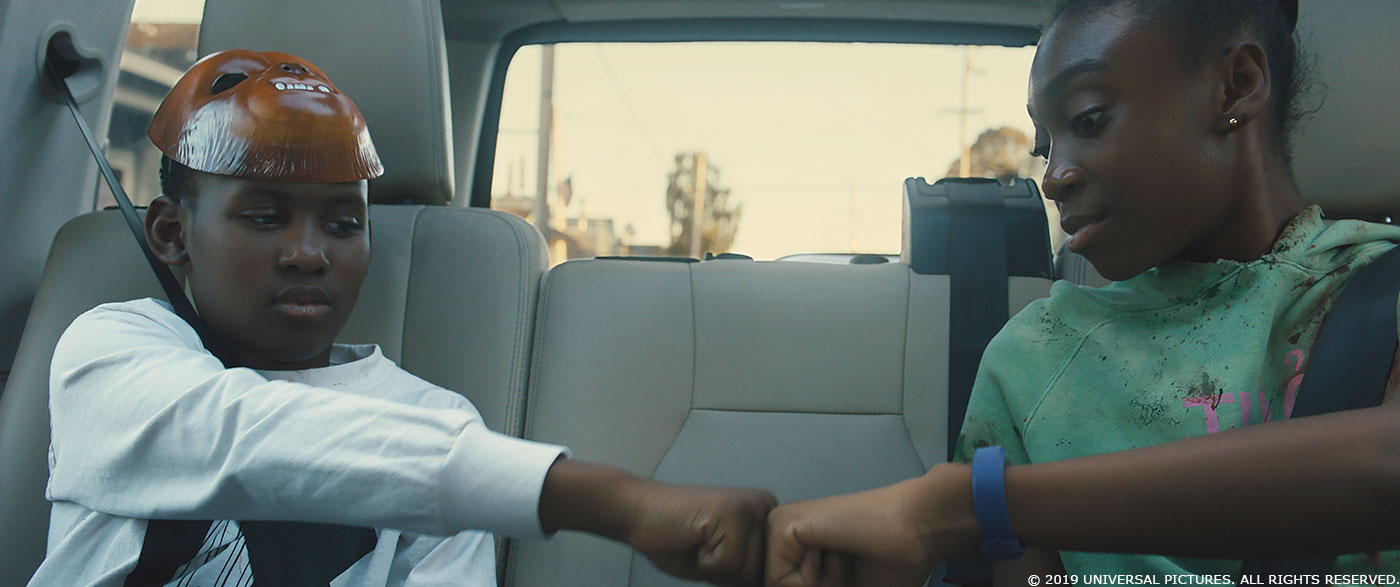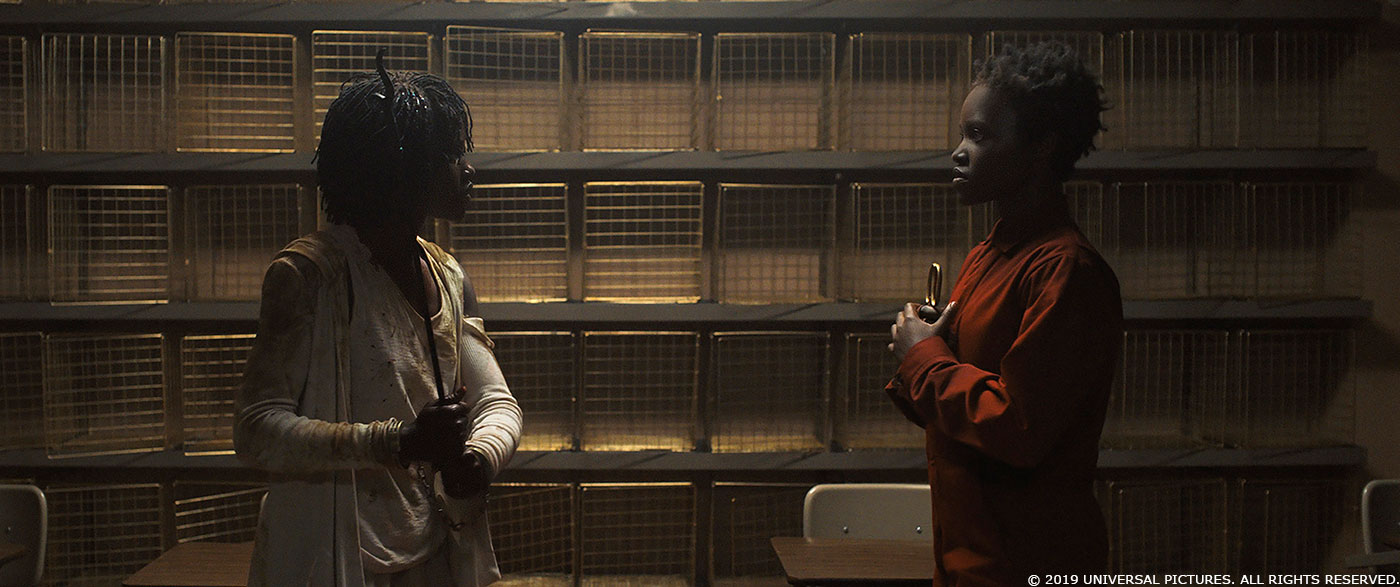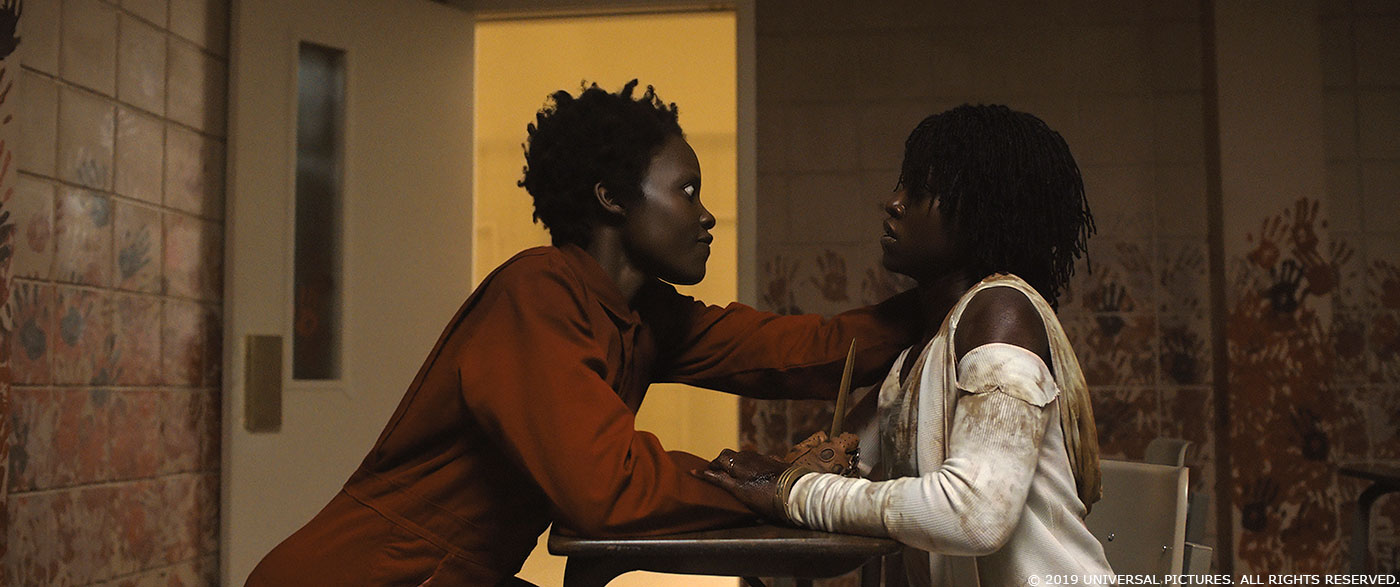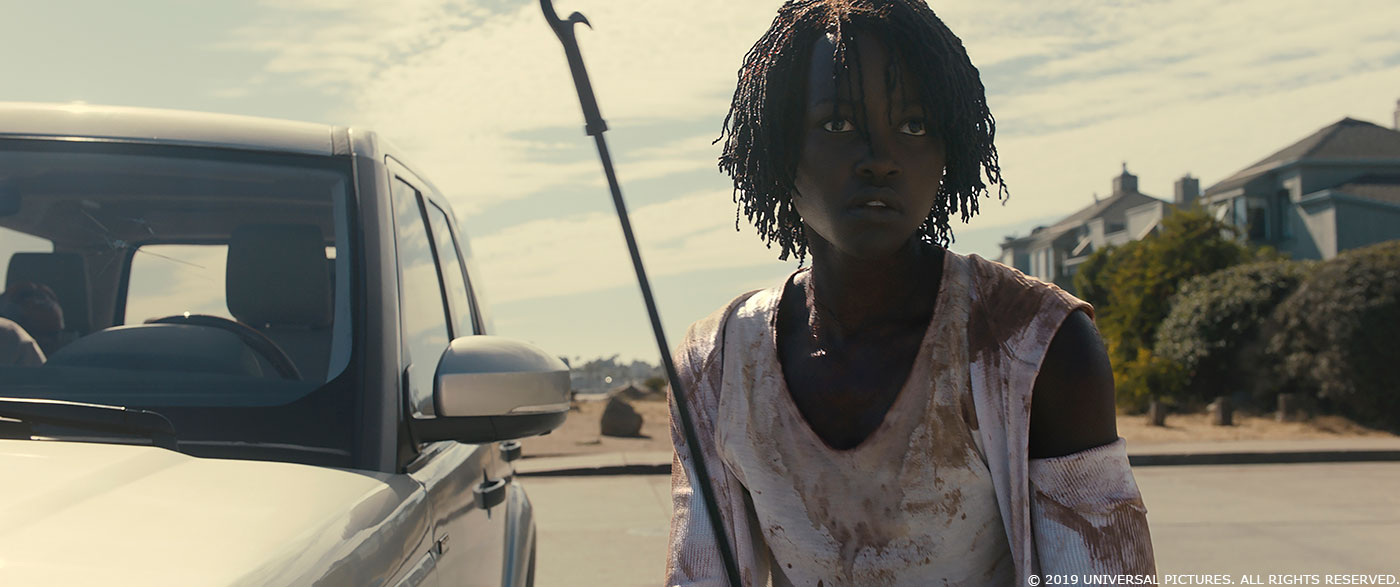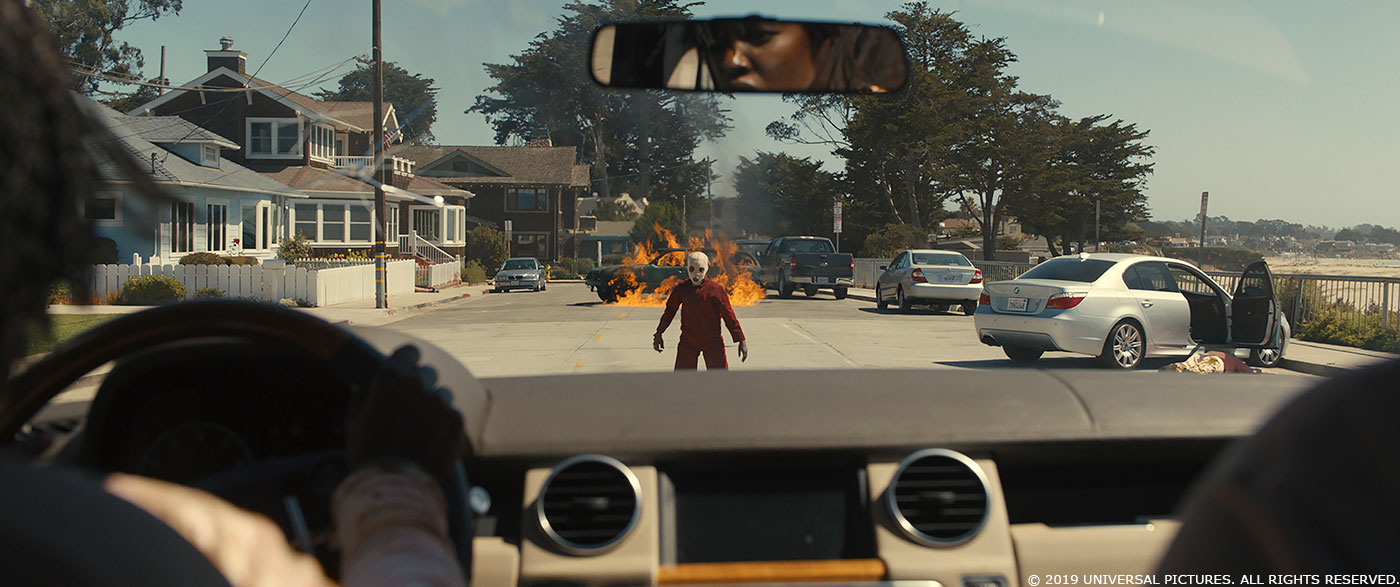Last year, Grady Cofer told us about the ILM‘s work on READY PLAYER ONE. He talks to us today about US, his first collaboration with director Jordan Peele.
How did you and ILM get involved on this show?
An executive producer at ILM, Jeanie King, took me aside one day and mentioned that there was a project at Universal that might need VFX guidance — a movie being developed by Jordan Peele. That’s kind of all I needed to know. There are times in one’s life when you sense a door opening. And I don’t mean just a career opportunity, I mean a chance at something really new.
I, like most people on the planet, was rocked by GET OUT. Clearly there was a new voice in Hollywood. So if there was a chance to work on his follow-up, I was gonna jump at it.
How was the collaboration with director Jordan Peele?
Jordan’s creative process is a thoughtful one. There are no arbitrary decisions in his work —every detail is deliberate and meaningful. It was fun to stand back and watch him craft his shots with such precision.
Given Jordan’s auteur status as a writer/director, one might assume that all of these choices are made in isolation, but he’s actually quite inclusive in his creative process. He has a small but trusted group of filmmakers — including his creative partner, Ian Cooper, his editor, his producers. He’s happy to entertain alternate ideas and points of view.
This, I have to say, is what made the process such a rewarding one. We felt like a team, all working with the same purpose: To realize Jordan’s vision in the purist and most honest way.
What was his approach and expectations about the visual effects?
Jordan’s aesthetic is very grounded. He wants everything to feel natural, organic. And though he uses genre tropes and allegorical elements to great effect, he has a keen sense of when things feel forced or on-the-nose. That meant that the visual effects had to live in the world of subtlety.
The main premise of US is that everyone has a twin, a doppleganger. Jordan needed his cast to be able to play opposite themselves in the same scene. Since this “twinning” effect was so fundamental to the story, it had to be flawless. Invisible. And not until the movie was over would the audience realize that they had witnessed an elaborate sleight-of-hand.
His movies aren’t big VFX feature films. How does that changes your work with him?
Jordan’s a smart guy, and a quick study. In one of our first meetings, we went over all of the different techniques for doubling a character: face replacements, green screen composites — where you might film a character on green screen and comp her in — and of course you have the traditional split-screen, which Jordan termed the “Haley Mills” after the actress in the movie that made it famous, THE PARENT TRAP.
We basically built up a language for the film’s effects work, with a clear understanding of how and when the various techniques could be applied. We got confident enough with these different processes that we could be a little improvisational about when and where to use certain techniques. It gave us freedom to be inspired by the scene as it developed.
How did you organize the work with your VFX Producer?
Lee Briggs was my VFX Producer, and we had a great time working together. We put together a talented core crew of compositors and painters, all led by our fantastic comp supervisor, Chris Balog. But we also tried out something new: We took a number of straight-forward shots and put them in a queue system. If an artist at ILM was interested, and had the time, he or she could pick up a shot and work on it. It was an interesting experiment, and certainly paid off, as a number of artists just wanted to be a part of a Jordan Peele project.
How did you split the work amongst the ILM offices?
Most of the work was achieved in our San Francisco office, though there were some excellent paint contributions from our Vancouver studio.
What was your approach for the shots involving the doubles?
As you would imagine, every scene had to be shot twice, with actors first playing their “normal” character, and then, after hair and makeup, playing their “red” counterpart. The approach was to try to get as much of the source material from the actual shoot (in the location, in the lighting) as possible, and avoid having to create expensive digital doubles.
Can you explain in detail about the shooting and the creation of those shots?
Ahead of time we would try to figure out which of the two twins was the “lead” in a particular shot — which one was guiding the action — and we would capture that first. We had discussed motion control for repeat moves, but it seemed too laborious, and in a movie filled with hand-held shots, too “controlled, » in a way. So instead we took careful notes of all of the camera motion, marking all of the positions and tilts, and then we recreated that same move for the twin plate as closely as possible. Then we would assess the two plates. In many cases we would opt to use a head from one plate, and track it onto the body of the double in the other plate.
What are the main challenge with this kind of shots?
The real trick was when the two characters had to interact with each other, like when Lupita’s character Adelaide confronts her doppleganger, Red. The violent scene culminates with the characters actually embracing each other. The problem is, there is no way repeat that action perfectly. Essentially, we’d end up with two disparate plates back at ILM — each one with a great performance, but neither of them really matching the other. That is when our artists went to work – isolating Lupita with roto mattes, blending in and out of each performance, borrowing various parts from the stunt doubles. It was a challenging creative process, but in the end, we hope it’s pretty seamless.
A little girl got lost in a place full of mirrors. Can you tell us more about your work on it?
The mirror maze was a great set by Production Designer, Ruth De Jong. It actually had a few one-way mirrors in it, which allowed the camera to hide behind a mirror and shoot the girl through it. That said, there were a number of shots that needed to be cleaned up, when the camera crew was seen in reflection.
There is also a creepy head replacement towards the end when young Adelaide encounters her twin.
How did you work with the stunt and SFX teams?
Mark Vanselow is a consummate professional and a great guy. He made sure that all of the stunt doubles’ performances were on-model to the their respective characters. And he developed some amazing fight choreography with Lupita.
We worked together closely on the car sequence, when Zora’s twin jumps on the hood and starts jabbing her scissors into the windshield. The scene was shot on a stage at Universal, with car on a green screen. The actress, Shahadi Wright Joseph was rigged on a stunt harness to help her scurry over the Land Rover. Her stunt double was wired up to be thrown off the car.
The movie is really gore by moments. How did you enhance this aspect?
We had great makeup and SFX teams on the show, but there were some instances where we couldn’t represent the gore in camera. In one scene, the Tyler family is wiped out in what Jordan called “The Seven-Second Massacre.” The problem was, the house that was chosen for this location had a pristine white carpet. No one relished the idea of having four blood bags bursting in that environment. So the shot was filmed completely bloodless, and all of the gore was added in post. In fact, we had a blood-element shoot down on our ILM stage, and that became the library for the rest of the show.
On of my favorite shots is when Elizabeth Moss’s character looks in a mirror and slices her face with scissors. Jordan had planned to cut right after she lifted the scissors to her face, but then Elizabeth continued the scene and gave this great performance. So we went ahead and added a digital slice in CG.
A dramatic moment shows a boy entering into a fire. How did you create and animate the flames?
It was a fantastic scene – and was captured in-camera. Elia Popov and his SFX team rigged up the burning car, and a stunt woman backed up into the flames. At ILM we took the footage and replaced the hands, feet, and eyes to match the appropriate character. And then we removed all of the fire rigging. It was a tricky shot, given all of the heat distortion.
Lupita Nyong’o enters into an hidden underground place. How did you extend this set?
Jordan and Ruth De Jong designed the “Underpass” as a long hallway with multiple rooms. The hallway was designed in a modular way, with some of the walls on rollers — so they could move and configure them however they wanted. They could line it up so that the hallway ended at a green screen, and then we could extend digitally. That allowed us to create a kind of labyrinth, this endless, complicated maze, and we could adjust it on the fly depending on what we wanted the environment to be.
This place is full of rabbits. Did you need to create CG versions for the rabbits or it was real animals?
We had real bunnies!
The movie ends with aerial shots showing the line of the doubles across the country. How did you create the shots and the crowd?
Jordan wanted an epic final shot that really showed the scope of this uprising. We pre-vized a version where the camera followed the line of “Untethered” up a hillside, created the hill, and revealed the line going off into the distance.
We needed a perfect, idealized vista. We ended up shooting it in Nicasio, not too far from ILM. We transported about 90 extras up onto the crest of the hill, so we could ground the shot in reality. Then we extended the line digitally. The vista was a bit too forested in areas, so Tim Mueller, our digital matte painter, did a masterful job at clearing out areas so our line could be more visible.
What’s the VFX shots count?
238.
What is your next project?
You’ll have to wait and see!
A big thanks for your time.
WANT TO KNOW MORE?
ILM: Dedicated page about US on ILM website.
© Vincent Frei – The Art of VFX – 2019


